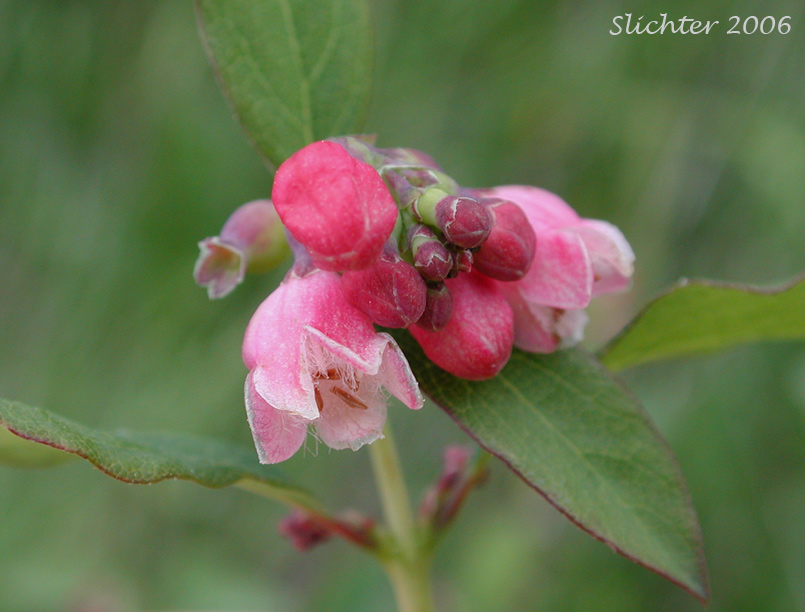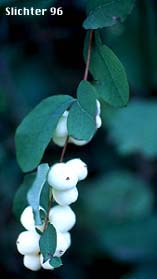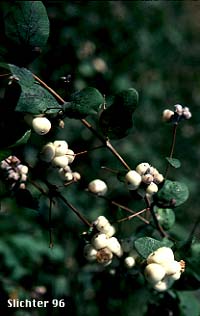Common Snowberry
Symphoricarpos albus var. laevigatus
Synonyms: Symphoricarpos albus ssp. laevigatus, Symphoricarpos rivularis


 Characteristics:
Characteristics:
Common snowberry is an attractive shrub with erect, branched stems from 1-2 meters high. The leaves are found on the stems. They are elliptic or elliptic-ovate in shape and are opposite on the stems. The blades range from 1.5-5 cm long and 1-3.5 cm wide with entire margins or occasionally with a a number of coarse teeth or irregular and shallow lobes.
The flowers are in short, dense, few-flowered racemes found at the tips of the stems and occasionally in the upper leaf axils. The corolla is a short and bell-shaped and measures from 5-7 mm long and about equally wide. The berries are white in color and are poisonous for human consumption. Creeping snowberry is similar in appearance but is a trailing shrub with flowers 3-5 mm long.
Common snowberry is commonly utilized as an ornamental shrub and the berries are attractive when ripe in the fall and winter. Birds utilize the berries for food as the berries remain attached to the twigs for much of the winter. The leaves may be rubbed in wet hands to produce a soapy lather.
Common snowberry is a plant of open woods and slopes from low to medium elevation in the mountains.
Common snowberry may be found from the panhandle of Alaska south to California and eastward to Quebec, central Idaho, Colorado, Nebraska, and Virginia.
In the Columbia River Gorge it may be found between the elevations of 100'-3600' from the Sandy River east to the Major Creek Plateau.
 ---
--- 
